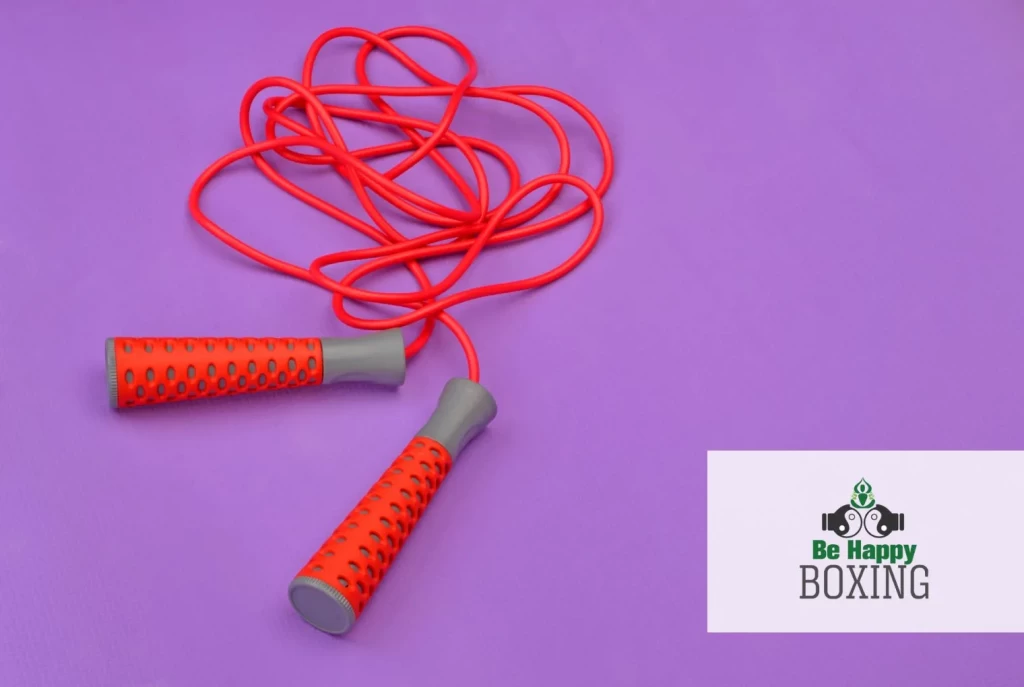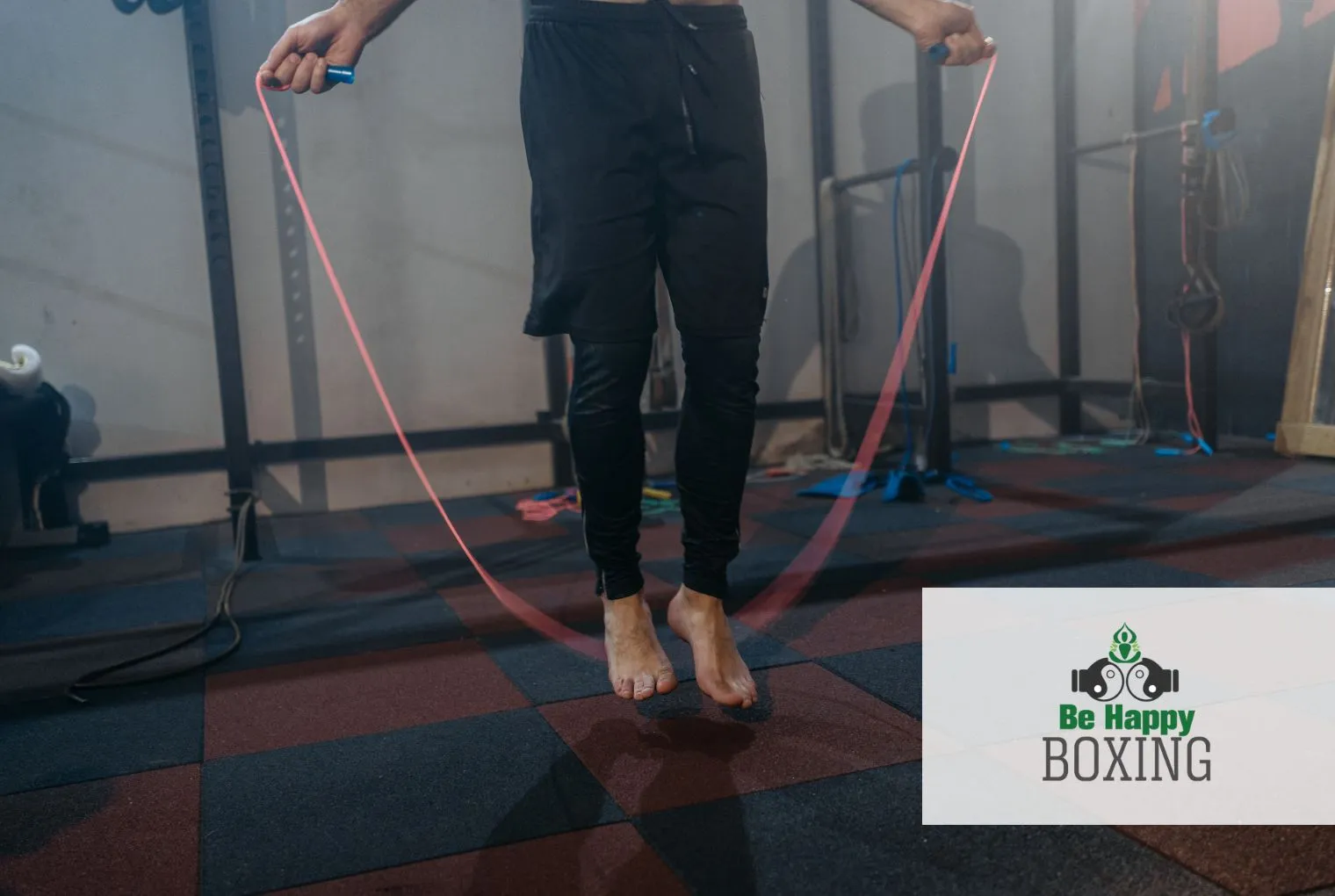When it comes to boxing training, few tools are as simple yet effective as the jump rope. A staple in every boxer’s routine, the jump rope helps fighters develop speed, agility, endurance, and coordination.
But why do boxers jump rope so religiously? The answer lies in the numerous benefits that this workout provides for both beginners and seasoned fighters.
Key Takeaways
- Jumping rope enhances a boxer’s footwork, speed, and agility, making it an essential training tool for improving movement inside the ring.
- A boxing jump rope workout builds endurance and stamina, helping fighters maintain energy and perform effectively throughout multiple rounds.
- Jump rope drills improve coordination and rhythm, allowing boxers to develop better timing for both offensive and defensive maneuvers.
Why do Boxers Jump Rope? The Importance of Jump Rope in Boxing Training
A boxing jump rope workout isn’t just about hopping in place—it’s a full-body exercise that enhances footwork, cardiovascular endurance, and reflexes. Boxers need quick feet and sharp movements to dodge punches and control the ring.
Jumping rope strengthens the legs, conditions the heart, and improves hand-eye coordination, all of which are essential for excelling in the sport.
Speed and Agility Development
Speed is a crucial factor in boxing, and the jump rope is an excellent tool for improving it. The repetitive motion of jumping conditions the fast-twitch muscle fibers, which are responsible for explosive movements.
Quick footwork drills using a jump rope allow fighters to develop the ability to move swiftly in and out of range, making them harder to hit and better at creating openings for their own strikes.
Improved Endurance and Stamina
A boxer jump rope workout builds endurance like no other. Boxers often jump rope for extended periods to replicate the intensity of a fight, increasing their stamina and ability to maintain high energy levels throughout multiple rounds.
The continuous motion of jumping keeps the heart rate elevated, strengthening cardiovascular performance and ensuring fighters don’t gas out in the later rounds of a match.
Enhanced Coordination and Rhythm
Boxing requires precise timing and rhythm, which is why boxers jump rope as a fundamental part of their training. The timing needed to consistently clear the rope forces the brain and body to work together, enhancing coordination.
Over time, this coordination translates into better punch accuracy, defensive movements, and overall ring control.

Essential Jump Rope Drills for Boxers
To maximize the benefits of a boxing jump rope workout, boxers incorporate a variety of drills, including:
- Basic Bounce: Jumping with both feet together, maintaining a steady rhythm.
- Alternating Feet: Mimicking a running motion to improve foot speed.
- Side-to-Side Jumps: Enhancing lateral movement and agility.
- Double Unders: Rotating the rope twice per jump for an advanced cardiovascular challenge.
- High Knees: Increasing leg endurance and explosiveness.
Tips for Jumping Rope for Boxers
When starting to jump rope, it’s essential to take a gradual approach. Instead of aiming for long 15-minute sessions right away, begin with shorter rounds of one minute, then increase to one minute and 30 seconds, and gradually build up. This helps your body adjust to the movement and prevents excessive fatigue.
Additionally, focus on making small jumps just high enough to allow the rope to pass under your feet. Many beginners tend to jump too high, which not only tires them out quickly but also increases the impact on their joints. By practicing tiny jumps, you’ll conserve energy and maintain a steady rhythm.
Don’t Forget to Breathe!
Proper breathing and technique also play a crucial role in effective jump rope training. Always breathe deeply, inhaling through your nose and exhaling through your mouth—or through your nose if possible—to maintain control and endurance.
Moreover, choose a suitable surface to minimize impact; softer surfaces like rubber flooring, synthetic grass, or even short grass are better than hard concrete, which can wear out your rope and put strain on your legs. For efficiency, focus on twisting the rope with your wrists rather than using your elbows or shoulders.
Don’t forget to keep your elbows close to your body and relying on wrist movement ensures smoother rotations with less energy expenditure, allowing for better coordination and endurance.
Key Features to Consider When Choosing a Jump Rope for Boxing
- Material: The type of material used in a jump rope greatly impacts performance. For speed training, a cable rope is the best option, while a PVC rope is ideal for general training purposes. Selecting the right material ensures you get the most out of your workout, whether focusing on agility or endurance.
- Weight: The weight of the rope affects both speed and endurance. Lightweight ropes allow for quicker movements, helping to build speed and agility while promoting faster recovery. On the other hand, heavier ropes enhance arm and shoulder endurance. For boxing, it’s best to choose a rope that balances both speed and strength training.
- Handle & Grip: A secure grip is essential, especially during intense workouts. Since sweating is inevitable, choosing a jump rope with non-slip, ergonomic handles ensures better control, preventing interruptions due to slipping.
- Adjustability: A well-fitted jump rope makes all the difference. Since everyone has a unique body type, an adjustable jump rope is crucial to avoid using one that’s either too short or too long, ensuring optimal efficiency and comfort during training.
Conclusion
Jump ropes are an essential tool for any boxer looking to improve their speed, agility, endurance, and coordination. By incorporating regular jump rope sessions into training, fighters can develop the footwork, stamina, and reflexes needed to excel in the ring.
Whether you’re a beginner or a professional, making jump rope workouts a priority will take your boxing performance to the next level.
Frequently Asked Questions
What type of jump rope is best for boxing training?
A speed rope with a lightweight design is ideal for boxing training, as it allows for quick rotations, helping improve foot speed and timing. Weighted ropes can also be used to build shoulder endurance.
How long should a boxer jump rope during a workout?
Most boxers jump rope for 10-15 minutes as a warm-up or conditioning exercise, often broken into 3-minute rounds with short rest periods to mimic a real fight.
Can jumping rope help with injury prevention in boxing?
Yes, jumping rope strengthens the ankles, calves, and knees, reducing the risk of common lower-body injuries by improving stability and reinforcing proper movement mechanics.





